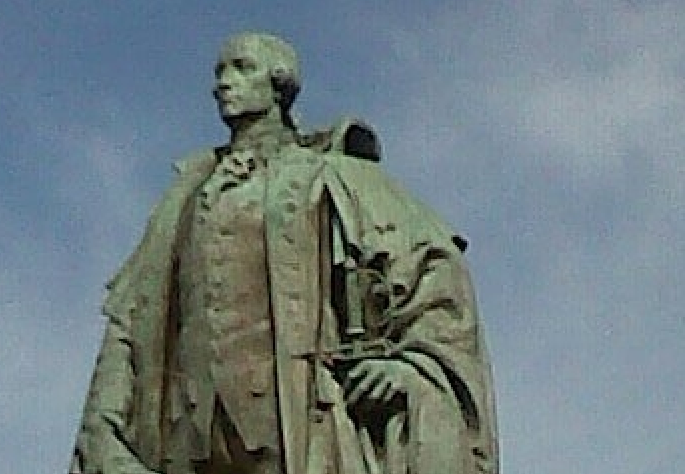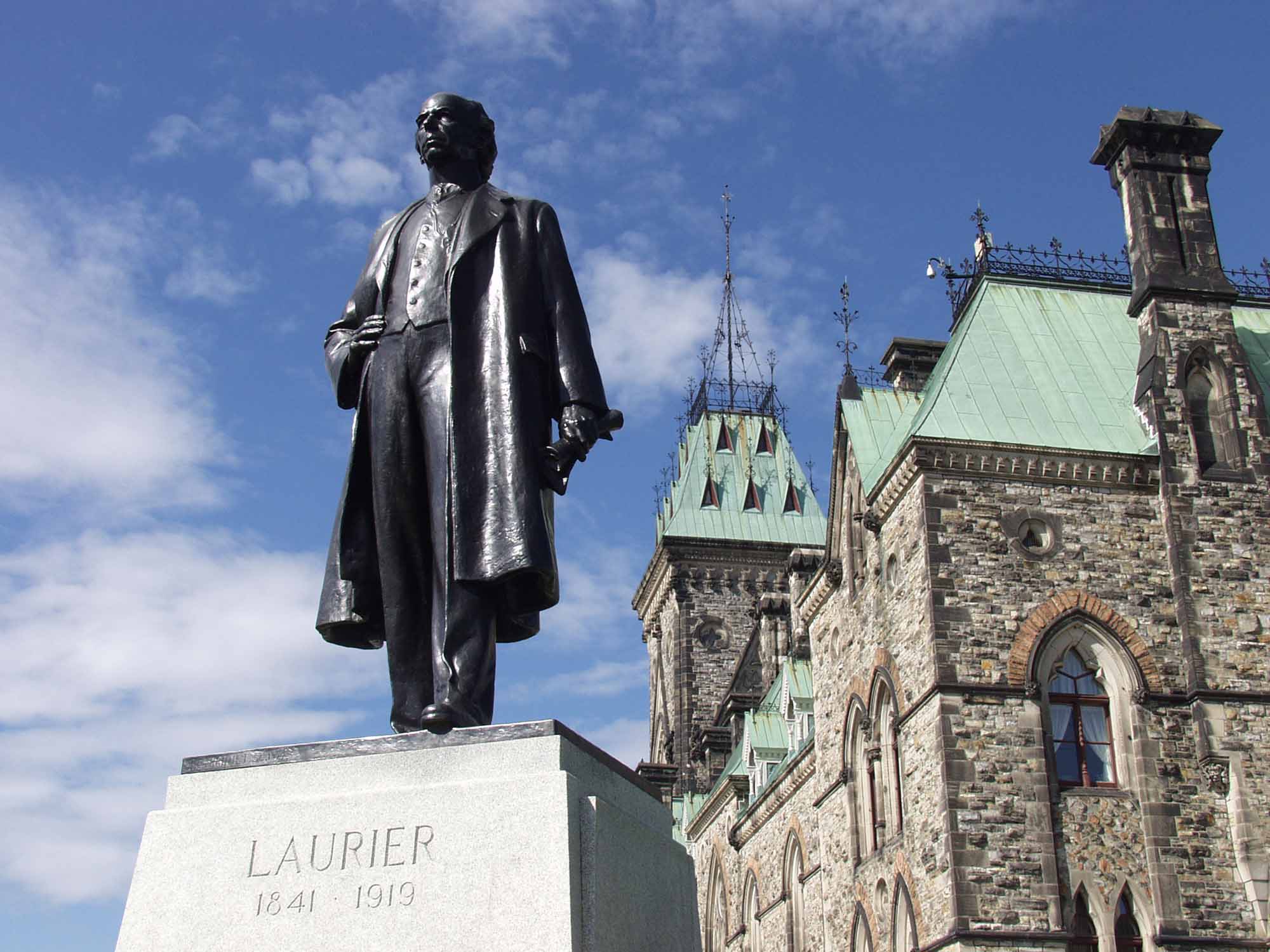Browse "Politics"
-
Article
Constitutional Act 1791 Document
Constitutional Act, 1791: DocumentSelected text of the Constitutional Act, 1791: an amendment of the Quebec Act designed to apply the British constitution as nearly as possible to colonial conditions without affecting the guaranteed rights of French Canadians. Note should be taken of the failure to define the role of the Executive Council and the ambiguity of the provisions for the Clergy Reserves. (What was meant by a "Protestant" clergy?) These flaws in the Act paved...
"https://development.thecanadianencyclopedia.ca/images/tce_placeholder.jpg?v=e9dca980c9bdb3aa11e832e7ea94f5d9" // resources/views/front/categories/view.blade.php
https://development.thecanadianencyclopedia.ca/images/tce_placeholder.jpg?v=e9dca980c9bdb3aa11e832e7ea94f5d9
-
Article
Constitutional Act, 1791 (Plain-Language Summary)
The Constitutional Act, 1791 was an act of the British Parliament. It was also known as the Canada Act. It divided the Province of Quebec into Upper Canada and Lower Canada. The Act was a first step on the long path to Confederation. It also gave women who owned property in Lower Canada the right to vote. But its rigid colonial structures set the stage for the Rebellions of 1837–38. This article is a plain-language summary of the Constitutional Act, 1791. If you would like to read about this topic in more depth, please see our full-length entry: Constitutional Act, 1791.
"https://d2ttikhf7xbzbs.cloudfront.net/media/media/79936521-112f-4f0c-95fb-1f84f847de57.jpg" // resources/views/front/categories/view.blade.php
https://d2ttikhf7xbzbs.cloudfront.net/media/media/79936521-112f-4f0c-95fb-1f84f847de57.jpg
-
Article
Constitutional History of Canada
The Constitution of Canada is the country’s governing legal framework. It defines the powers of the executive branches of government and of the legislatures at both the federal and provincial levels. Canada’s Constitution is not one legal document. It is a complex mix of statutes, orders, British and Canadian court decisions, and generally accepted practices known as constitutional conventions. The Constitution has been in constant evolution from colonial times to the present day. The story of the Constitution is the story of Canada itself. It reflects the shifting legal, social and political pressures facing Canadians, as well as their choices as a society.
"https://d2ttikhf7xbzbs.cloudfront.net/media/media/143f8587-f938-4cf1-bdc2-c441d02dc962.jpg" // resources/views/front/categories/view.blade.php
https://d2ttikhf7xbzbs.cloudfront.net/media/media/143f8587-f938-4cf1-bdc2-c441d02dc962.jpg
-
Article
Convention of 1818
The Convention of 1818 was a treaty between the United States and Britain that set the 49th parallel as the boundary between British North America and the US across the West.
"https://d2ttikhf7xbzbs.cloudfront.net/media/media/7aadadc0-3240-4049-a42a-9644bf5df765.jpg" // resources/views/front/categories/view.blade.php
https://d2ttikhf7xbzbs.cloudfront.net/media/media/7aadadc0-3240-4049-a42a-9644bf5df765.jpg
-
Article
Cornwallis Statue
A statue of Edward Cornwallis, the colonial founder of Halifax, was erected in the city’s downtown in 1931 as a celebration of British settlement. It later became an object of controversy in the midst of a growing public debate about Cornwallis’s treatment of the Mi’kmaq people.
"https://d2ttikhf7xbzbs.cloudfront.net/media/media/ed63b8c0-720a-42b2-a875-2ea9d0dc48f4.jpg" // resources/views/front/categories/view.blade.php
https://d2ttikhf7xbzbs.cloudfront.net/media/media/ed63b8c0-720a-42b2-a875-2ea9d0dc48f4.jpg
-
Article
Council of Twelve
The Council of Twelve was established 1719 in Nova Scotia to advise the governor, deliberate on bills in the legislature's upper house and act as a civil court of appeal. Councillors were appointed by the governor and served for life. Until the 1750s the council was dominated by military officers.
"https://development.thecanadianencyclopedia.ca/images/tce_placeholder.jpg?v=e9dca980c9bdb3aa11e832e7ea94f5d9" // resources/views/front/categories/view.blade.php
https://development.thecanadianencyclopedia.ca/images/tce_placeholder.jpg?v=e9dca980c9bdb3aa11e832e7ea94f5d9
-
Article
Crow's Nest Pass Agreement
In the 1890s, when rich mineral deposits were discovered in the Kootenay region of southern BC, American developers began to move into the region and extend rail lines northward from their transcontinentals.
"https://development.thecanadianencyclopedia.ca/images/tce_placeholder.jpg?v=e9dca980c9bdb3aa11e832e7ea94f5d9" // resources/views/front/categories/view.blade.php
https://development.thecanadianencyclopedia.ca/images/tce_placeholder.jpg?v=e9dca980c9bdb3aa11e832e7ea94f5d9
-
Article
Crowsnest Pass Strike 1932
This 7-month strike, involving all but one mine in Alberta's CROWSNEST PASS, was the most bitter strike in the region's turbulent history.
"https://development.thecanadianencyclopedia.ca/images/tce_placeholder.jpg?v=e9dca980c9bdb3aa11e832e7ea94f5d9" // resources/views/front/categories/view.blade.php
https://development.thecanadianencyclopedia.ca/images/tce_placeholder.jpg?v=e9dca980c9bdb3aa11e832e7ea94f5d9
-
Macleans
Cuba Downs US Planes
In the end, the protest sputtered out, a victim of high seas and bad weather in the choppy Straits of Florida. The 35 boats and several private planes that set out from Key West, Fla.This article was originally published in Maclean's Magazine on March 11, 1996
"https://development.thecanadianencyclopedia.ca/images/tce_placeholder.jpg?v=e9dca980c9bdb3aa11e832e7ea94f5d9" // resources/views/front/categories/view.blade.php
https://development.thecanadianencyclopedia.ca/images/tce_placeholder.jpg?v=e9dca980c9bdb3aa11e832e7ea94f5d9
-
Article
Dominion Lands Act
The Dominion Lands Act was a federal law that received royal assent on 14 April 1872. It allowed for lands in Western Canada to be granted to individuals, colonization companies, the Hudson’s Bay Company, railway construction, municipalities and religious groups. The Act set aside land for First Nations reserves. Métis lands were organized by the government outside the Dominion Lands Act, using the scrip system. The Act also set aside lands for what would become National Parks (1883). The Dominion Lands Act devised specific homestead policies to encourage settlement in the West. It covered eligibility and settlers’ responsibilities, and outlined a standard measure for surveying and subdividing land. Some 1.25 million homesteads were made available over an expanse of about 80 million hectares — the largest survey grid in the world. The Act was repealed in 1930, when lands and resources were transferred from the federal government to the provinces of Manitoba, Saskatchewan and Alberta. From 1870 to 1930, roughly 625,000 land patents were issued to homesteaders. As a result, hundreds of thousands of settlers poured into the region.
"https://d2ttikhf7xbzbs.cloudfront.net/media/media/45847956-16b4-43b7-b79d-e6ba45b9c9f4.jpg" // resources/views/front/categories/view.blade.php
https://d2ttikhf7xbzbs.cloudfront.net/media/media/45847956-16b4-43b7-b79d-e6ba45b9c9f4.jpg
-
Article
Double Shuffle
After the George-Étienne Cartier-John A. MacDonald ministry in the Province of Canada was forced to resign on 29 July 1858, a Reform ministry was formed under George Brown and A.A. Dorion.
"https://development.thecanadianencyclopedia.ca/images/tce_placeholder.jpg?v=e9dca980c9bdb3aa11e832e7ea94f5d9" // resources/views/front/categories/view.blade.php
https://development.thecanadianencyclopedia.ca/images/tce_placeholder.jpg?v=e9dca980c9bdb3aa11e832e7ea94f5d9
-
Article
Durham Report
In 1838, the British politician Lord Durham was sent to British North America to investigate the causes of the rebellions of 1837–38 in the colonies of Upper and Lower Canada. Durham's famous Report on the Affairs of British North America (1839) led to a series of reforms and changes. These included uniting the two Canadas into a single colony, the Province of Canada, in 1841. (See also: Act of Union.) The report also paved the way for responsible government. This was a critical step in the development of Canadian democracy. The report played an important role in the evolution of Canada’s political independence from Britain.
"https://d2ttikhf7xbzbs.cloudfront.net/media/media/65ee2cc4-fcf5-4663-b8d2-f9ce30422a92.jpg" // resources/views/front/categories/view.blade.php
https://d2ttikhf7xbzbs.cloudfront.net/media/media/65ee2cc4-fcf5-4663-b8d2-f9ce30422a92.jpg
-
Article
Election 1891: A Question of Loyalty
The following article is an editorial written by The Canadian Encyclopedia staff. Editorials are not usually updated.
"https://d2ttikhf7xbzbs.cloudfront.net/media/media/637eb1d3-70a0-4599-a8f5-04361d05bebd.jpg" // resources/views/front/categories/view.blade.php
https://d2ttikhf7xbzbs.cloudfront.net/media/media/637eb1d3-70a0-4599-a8f5-04361d05bebd.jpg
-
Article
Election of 1896
The following article is an editorial written by The Canadian Encyclopedia staff. Editorials are not usually updated.
"https://d2ttikhf7xbzbs.cloudfront.net/media/media/e90e0bdd-a0d0-4752-8a94-52946de0b4d9.jpg" // resources/views/front/categories/view.blade.php
https://d2ttikhf7xbzbs.cloudfront.net/media/media/e90e0bdd-a0d0-4752-8a94-52946de0b4d9.jpg
-
Article
Election of 1917
In 1917, Canadians went to the polls on an issue that was literally one of life and death. The federal election of 1917, fought over the issue of conscription during the First World War, deeply divided French and English Canada.
"https://d2ttikhf7xbzbs.cloudfront.net/media/media/6a9bae9d-edd9-4ca5-a3b3-b1572b7d034b.jpg" // resources/views/front/categories/view.blade.php
https://d2ttikhf7xbzbs.cloudfront.net/media/media/6a9bae9d-edd9-4ca5-a3b3-b1572b7d034b.jpg
